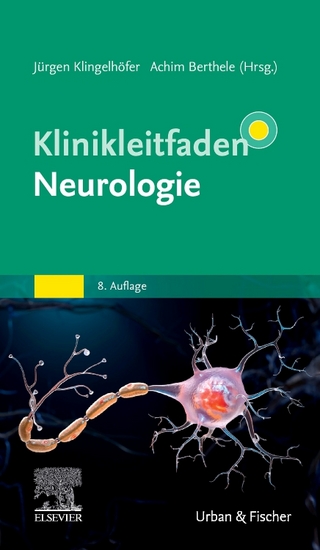
Movement Disorders
Oxford University Press Inc (Verlag)
978-0-19-992752-4 (ISBN)
- Titel ist leider vergriffen;
keine Neuauflage - Artikel merken
Patients suffering from movement disorders pose many challenges for the clinician, and even the most experienced of practitioners can arrive at the point where diagnostic, work-up, treatment, or prognostic thinking falters. Authored by three leading experts in the field, Movement Disorders walks the reader through the important principles of examination, investigation, and management for each of the common types of movement disorders. Applying a case-based approach, each chapter in this volume of the "What do I Do Now?" series in neurology presents the reader with a real-time patient encounter, detailing the thinking behind diagnostic and treatment decision-making. Some of the presentations featured in Movement Disorders are quite rare, offering the clinician a quick reference tool for those difficult clinical situations. Succinct and direct, Movement Disorders is the perfect guide to answering the common, and uncommon, questions in this subspecialty of neurology.
Dr. Richard A. Walsh, MB, MD, MRCPI, is a consultant neurologist at Tallaght Hospital and Senior Clinical Lecturer in Neurology at Trinity College Dublin, Ireland. Susan H. Fox, MB ChB, MRCP(UK), PhD, is Associate Professor of Neurology at University of Toronto, Movement Disorders Clinic at Toronto Western Hospital. Robertus MA de Bie, MD, is a neurologist, Department of Neurology, Academic Medical Center, Amsterdam, Netherlands.
Part I Parkinson's Disease ; 1) Initiation of treatment in early Parkinson's disease (PD) ; Early PD treatment should include counseling the subject about living with a chronic neurodegenerative disorder, as well as review of medication options and long-term lifestyle changes. ; 2) Medical management of advanced Parkinson's disease with motor fluctuations ; Advanced PD patients with a fluctuating response to levodopa are a challenge to manage. Balancing improved motor symptoms without inducing side effects and dyskinesia is the key. ; 3) Management of tremor-dominant Parkinson's disease ; Tremor in PD can be resistant to standard doses of dopaminergic treatments. Therefore other treatment strategies may need to be considered. ; 4) Impulse control disorders in Parkinson's disease ; Impulse control disorders are a significant side effect of dopamine agonists and less commonly of levodopa. The key here is recognition. Thus always make sure to ask the patient/caregiver about any issues with impulse control. ; 5) Parkinson's disease patient with cognitive impairment ; Cognitive impairment can occur at all stages of PD, but dementia is more common with advancing disease. Cholinesterase inhibitors can be helpful, especially if hallucinations are present. ; 6) Non-motor symptoms in Parkinson's disease ; PD patients frequently experience sleep disturbances due to disease processes or side-effects of medications. Therefore, taking a sleep history is essential. Pain can be a primary symptom of PD as well, but may also be non-responsive to dopaminergic agents. ; 7) Whom to refer for surgery? ; Bilateral deep brain stimulation of the subthalamic nucleus is extremely effective for PD subjects with disabling fluctuations. The antiparkinsonian benefit is only as good as the best ON response with levodopa. Subjects have to be carefully evaluated to determine suitability due to risk of worsening cognition and speech. ; Part II Atypical Parkinsonisn ; 8) Multiple System Atrophy ; Multiple system atrophy (MSA) may present as a parkinsonian syndrome with slowness. Early falls and autonomic features and in some a cerebellar ataxia will differentiate MSA from PD. MRI abnormalities can be helpful in diagnosis. Some subjects may initially respond to levodopa but develop bothersome craniobulbar dystonia. ; 9) Progressive Supranuclear Palsy ; Progressive supranuclear palsy (PSP) presents in older individuals with slowness, stiffness and falls, and no response to levodopa. Cognitive problems include impulsivity that can cause falls. Therefore, test the 'applause sign'. The supranuclear gaze palsy may also be a late feature. ; Part III Gait Disorders ; 10) Cerebellar ataxia ; Clue to the cause of ataxia are age at onset, duration of ataxia, and presence of a relevant family history. A chronic ataxic gait may be due to alcohol abuse, neurodegenerative disease, or genetic spinocerebellar ataxia syndromes. Acute or subacute causes include nutritional deficiencies, drugs, infections, structural lesions, and paraneoplastic syndromes. ; 11) Frontal lobe gait apraxia ; A broad-based gait with short stride, freezing, falls, and an inability to 'walk and talk', in the elderly, is most likely due to frontal lobe pathology. The commonest cause is cerebrovascular disease. The risks and benefits of shunting need to be carefully weighted in the elderly, as normal pressure hydrocephalus is over-diagnosed. ; Part IV Dystonia ; 12) Cervical dystonia ; Cervical dystonia commonly presents in adults. The cause is usually idiopathic and investigations are only needed if other neurological signs are present. The most effective treatment is with repeated Botulinum toxin injections. ; 13) Wilson's disease ; Wilson's disease should always be excluded in young-onset parkinsonism, tremor, and dystonia syndromes. Treatment with de-coppering agents can occasionally worsen neurological symptoms. ; 14) Dopa responsive dystonia ; Dopa-responsive dystonia usually presents in children with leg dystonia that causes walking difficulties and worsens over the day. All young patients with dystonia should have a trial of levodopa. Genetic testing may be negative due to the size of the GCH-1 gene. ; Part V Other Movement Disorders ; 15) Tardive Dyskinesia ; Tardive dyskinesia can manifest as a range of involuntary movements including stereotypies, chorea, and dystonia in subjects on dopamine antagonists after 1 to 6 months. Recognition is key. Botulinum toxin can help focal tardive dystonia. ; 16) Essential tremor ; Essential tremor is the commonest cause of a bilateral action and postural limb tremor. Current medical treatment options are usually unsatisfactory due to poor response and side effects. Lifestyle adaptations are important. ; 17) Chorea ; There are many causes of chorea. Focused investigations will reduce costs and increase yield. ; 18) Tourette Syndrome ; Tics are brief, usually involuntary movements or vocalizations that are patterned and repetitive. The presence of a premonitory urge can help differentiate tics from other movement disorders. A history of both chronic motor and vocal tics has to be present to diagnose Tourette syndrome. To avoid medications and side effects, subjects with mild symptoms should be counseled, as there may be improvement in symptoms with age. ; 19) Restless legs syndrome ; Restless legs syndrome is extremely common and probably only a proportion of patients will seek medical attention. There is a good response to night-time dosing of long-acting dopamine agonists but the key is to keep the dose low to reduce the problem of augmentation. ; 20) Psychogenic movement disorders ; Tremor is the commonest psychogenic movement disorder. Variability in tremor frequency and pattern, with distraction and entrainment, are common features. ; 21) Myoclonus ; There are many causes of myoclonus that are seen in general medical, epilepsy, or movement disorder clinics. One of the rarer forms, spinal myoclonus, causes jerk-like movements of the trunk. Psychogenic causes are common but spinal pathology must be excluded. ; Part VI Movement Disorders Emergencies ; 22) PD with psychosis ; PD patients can experience frightening hallucinations and paranoid delusions that may necessitate hospital admission. Initial management requires exclusion of underlying medical issues such as infection. The only safe antipsychotics that can be used in PD are quetiapine and clozapine. ; 23) Neuroleptic Malignant syndrome ; A high index of suspicion is required to diagnose NMS. The commonest scenario is patients on antipsychotic drugs presenting with acute rigidity, confusion, tachycardia, and a fever, often in the setting of dehydration. ; 24) Status Dystonicus ; Severe generalized dystonia can sometimes worsen, often due to intercurrent infection, and become unresponsive to usual therapies. Treatment should be supportive and case-based.
| Zusatzinfo | Illustrations |
|---|---|
| Verlagsort | New York |
| Sprache | englisch |
| Gewicht | 242 g |
| Themenwelt | Medizin / Pharmazie ► Medizinische Fachgebiete ► Neurologie |
| Medizin / Pharmazie ► Medizinische Fachgebiete ► Notfallmedizin | |
| ISBN-10 | 0-19-992752-9 / 0199927529 |
| ISBN-13 | 978-0-19-992752-4 / 9780199927524 |
| Zustand | Neuware |
| Haben Sie eine Frage zum Produkt? |
aus dem Bereich


